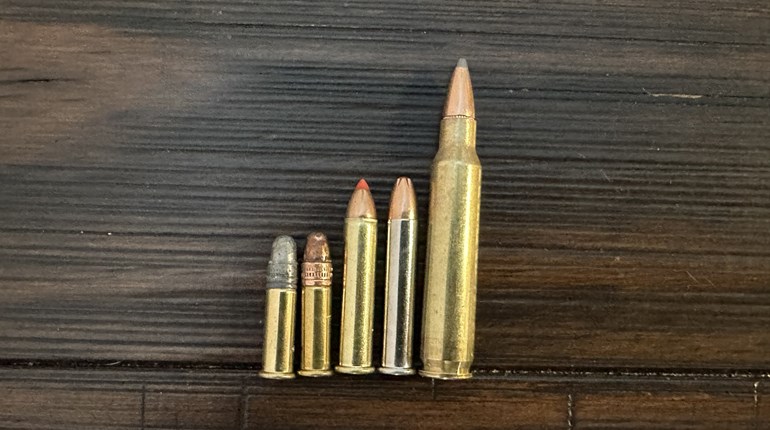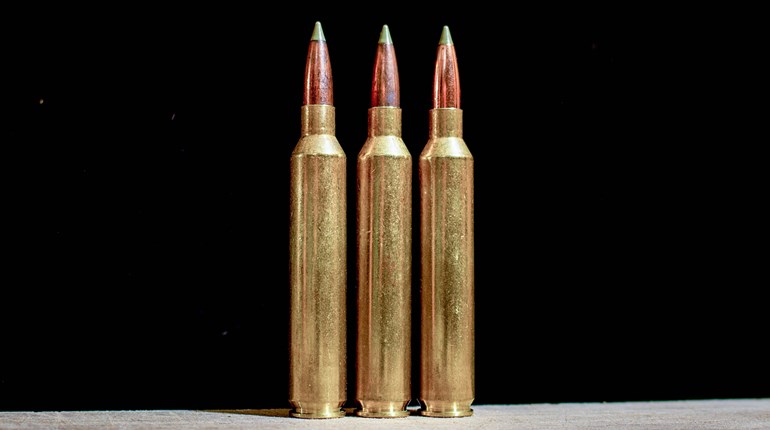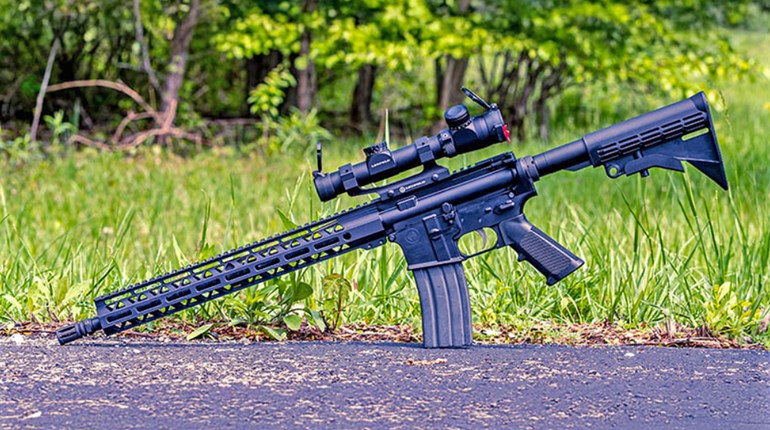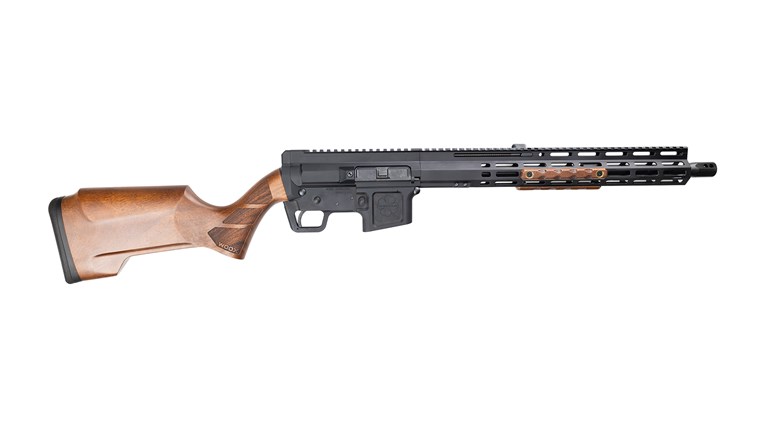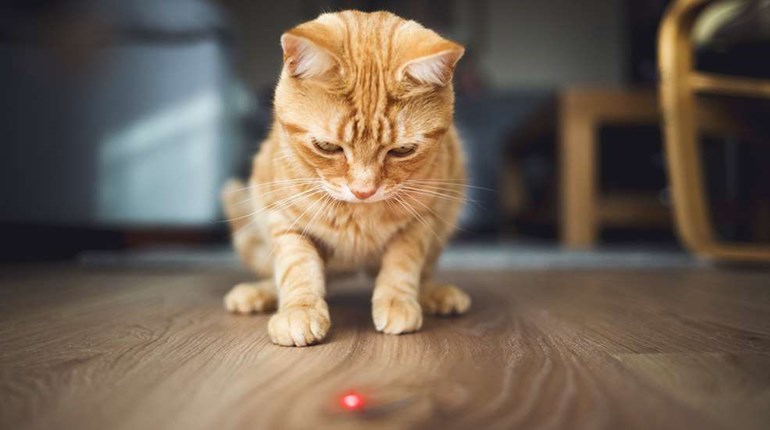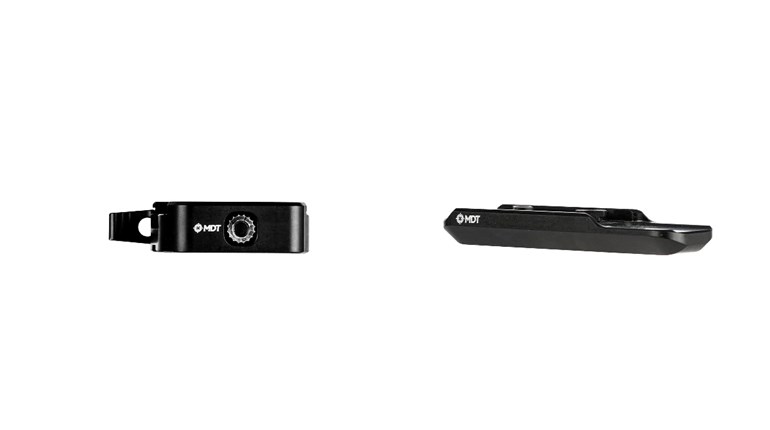
While many people know about the typical cartridge swapping ability of common revolver cartridges, such as firing .38 Special out of a .357 Mag, most are unaware of the long-gun variants of “interchangeable” cartridges. But there are a few centerfire-rifle chamberings that allow multiple cartridges to be shot in a single chambering without safety issues.
.223 Wylde
You undoubtedly know a 5.56X45 chamber can fire both a 5.56X45/5.56 NATO round as well as the civilian variant, the .223 Remington. What you may not know is that there’s a chambering that takes the best of each cartridge and combines them, and can still fire 5.56 and .223 alike. The hybrid solution? The .223 Wylde, which took features from the military and civilian variants. In short, the 5.56 NATO operates at a higher pressure and has a slightly larger chamber dimension with more free bore, resulting in greater bullet jump. However, this excess free bore makes for a less-accurate round.
This is where the .223 Rem. chambering comes in to save the day; the .223 Rem. functions at lower pressures and has less bullet jump. The .223 Wylde combines the free bore angle of the 5.56 NATO with the tighter chamber body dimension and free bore length of the .223 Rem, giving us enough room so 5.56 NATO cartridges won’t build dangerous pressure, but keeps the jump of the .223 Rem. to offer increased accuracy potential. Now the question is, why don’t you see more rifles chambered in it?
7mm/284 Cartridges
I’m throwing two under the same category, because, though the cartridges are different, they’re all 7mm or .284 diameter. The two most popular cartridges in this caliber are the .280 Rem. and .280 AI, and 7X57 Mauser and .275 Rigby. The former is the difference in shoulder dimensions of a given case. P.O. Ackley basically reamed out his chambers a bit more to fireform brass and blow out the shoulder on his cartridges to increase case capacity. If you have a gun chambered for .280 AI, but only have .280 Rem. ammo, you can still shoot it. The other way around? Don’t try it.
Another note: Any cartridge can be “improved” and have the shoulder of the chamber reamed out to create more space, but since the .280 AI is the only factory-loaded Ackley Improved round, unless you reload, you won’t see factory ammo for any other AI-chambered guns. Furthermore, if not completed by a competent gunsmith, you may damage your rifle. As for the 7X57 Mauser and the .275 Rigby, there is no difference. The latter is the British naming of the former. So, there should be no concern of shooting ammo marked for one gun through a barrel stamped for the other.
.300 Whisper/.300 AAC Blackout
The .300 Whisper and .300 AAC Blackout share almost an identical case. According to major manufacturers like Hornady, which makes brass, ammo and reloading dies for both cartridges, there isn’t a difference significant enough to matter. The fact that Hornady made ammo reading “.300 Whisper” and stated it could be shot in either gun, plus the fact that the dies Hornady produces were at one time labeled as “.300 Whisper/Blackout,” implies that the two can be used interchangeably.
Furthermore, Smith & Wesson at one point stamped its barrels for both. In short, if the difference is negligible to two major players in the gun industry, it should be a negligible difference to consumers. If a diligent shopper were to stumble upon a box of .300 Whisper, based on the historical industry evidence, I wouldn’t hesitate to shoot it out of a gun marked .300 AAC Blackout.
Anything .45-70 or Bigger
While the .45-70 Govt. isn’t anything to scoff at, there are larger .45-cal cartridges that can fire this beefy cartridge. (Quigley Down Under, anyone?) For those unaware of the movie, the protagonist uses a rifle chambered in .45-110, which could fire the .45-70, .45-90, and .45-110 cartridges.
However, there’s an even bigger .45-caliber rifle of the same design that takes it up another notch: the .45-120. If you want the biggest, baddest rifle cartridge interchangeability you can get, the .45-120 is where the going gets tough, and the tough get going, because no one I know really wants to mess with someone willing to push a 500-grain bullet to over 1,800 fps (based on Hodgdon reloading data), and deal with the recoil on the back end.
This load essentially splits the difference between a .338 Lapua and a .50 BMG in recoil energy. However, there are a few concerns. Remember that free bore/bullet jump thing we talked about before? It’s a lot to shoot such a small, compact cartridge (it feels weird typing that in reference to a .45-70!) in a .45-120. Only soft lead bullets should be shot to not cause damage to the rifle due to misalignment of centering the bullet into the bore as it jumps from chamber to the barrel. Most experts recommend buying a gun chambered for .45-90 to significantly cut down on the amount of bullet jump. Plus, unless you reload or pay top dollar for ammo, finding anything bigger than .45-90 will be quite the challenge. But let’s be real … a .45-120 would be sweet just to have.













